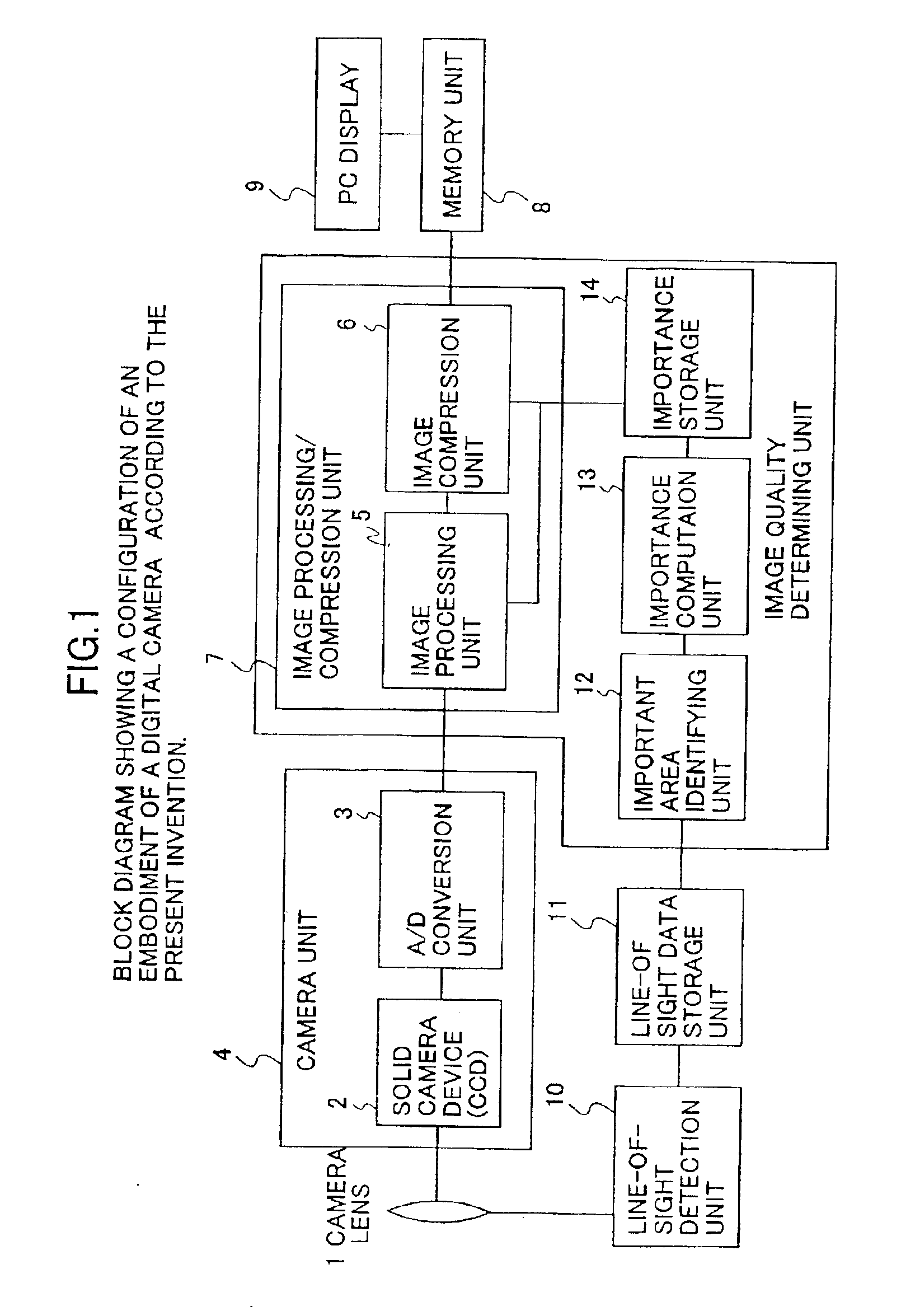Camera apparatus and method of taking pictures including simplified processing
a technology of camera and processing method, applied in the field of camera equipment, can solve the problems of limited size of memory medium provided in the digital camera, difficulty for users not familiar with the camera, and unrealistic scheme, and achieve the effect of simplifying the noise removal processing
- Summary
- Abstract
- Description
- Claims
- Application Information
AI Technical Summary
Benefits of technology
Problems solved by technology
Method used
Image
Examples
first embodiment
[0120]FIG. 15 is a flowchart of processing that makes image quality vary depending on levels of importance.
[0121]In the first embodiment, a nature of gray-scale representation is given a greater consideration in areas of great importance than in other areas. This makes it possible to improve image quality in the areas of great importance, and, at the same time, can reduce the required memory volume and step up the image processing speed compared with a case in which the same level of gray-scale representation is applied across the board to the entire image.
[0122]At a step ST1, importance of each area is retrieved from the importance storage unit 14. At a step ST2, image data is supplied from the A / D conversion unit 3.
[0123]At a step ST3, importance is determined by identifying an area to which the pixel X of interest belongs. At a step ST4, the means for determining the number of gray scale levels determines the number of gray scale levels. When the areas 1 through 3 have importance...
second embodiment
[0137]FIG. 16 is a flowchart of processing that makes image quality vary depending on levels of importance.
[0138]When a camera device is a CCD with a primary color array, a color filter as shown in FIG. 17 is used. In this case, any given pixel is provided with only one color selected from R, G, and B, so that colors of the two remaining colors need to be interpolated. A process for interpolating color information is referred to as color interpolation processing.
[0139]As can be seen from FIG. 17, the density of G pixels is twice as great as the density of R pixels or the density of B pixels in the primary color array. This is because human visual perception of luminance is relatively greater for the G component. Interpolation of the G color is thus performed more rigidly than interpolation of the two other colors.
[0140]In this embodiment, color interpolation processing is given a greater consideration in areas of great importance than in other areas. This makes it possible to improv...
third embodiment
[0158]FIG. 20 is a flowchart of processing that makes image quality vary depending on levels of importance.
[0159]In the third embodiment, processing for improving image sharpness is changed according to the importance levels of respective image areas. The processing for improving sharpness is also called an aperture correction, which enhances edge portions of the image. In order to enhance edge portions, a check needs to be made first as to whether the pixel of interest is part of an edge portion. Such a check is made by using G signals based on the assumption that G values are good representative of luminance levels.
[0160]In this embodiment, the check for determining whether the pixel of interest is part of an edge portion and the processing for improving sharpness are performed more diligently in areas of great importance than in other areas. This makes it possible to improve image quality in the areas of great importance, and, at the same time, can step up the processing speed co...
PUM
 Login to View More
Login to View More Abstract
Description
Claims
Application Information
 Login to View More
Login to View More - R&D
- Intellectual Property
- Life Sciences
- Materials
- Tech Scout
- Unparalleled Data Quality
- Higher Quality Content
- 60% Fewer Hallucinations
Browse by: Latest US Patents, China's latest patents, Technical Efficacy Thesaurus, Application Domain, Technology Topic, Popular Technical Reports.
© 2025 PatSnap. All rights reserved.Legal|Privacy policy|Modern Slavery Act Transparency Statement|Sitemap|About US| Contact US: help@patsnap.com



